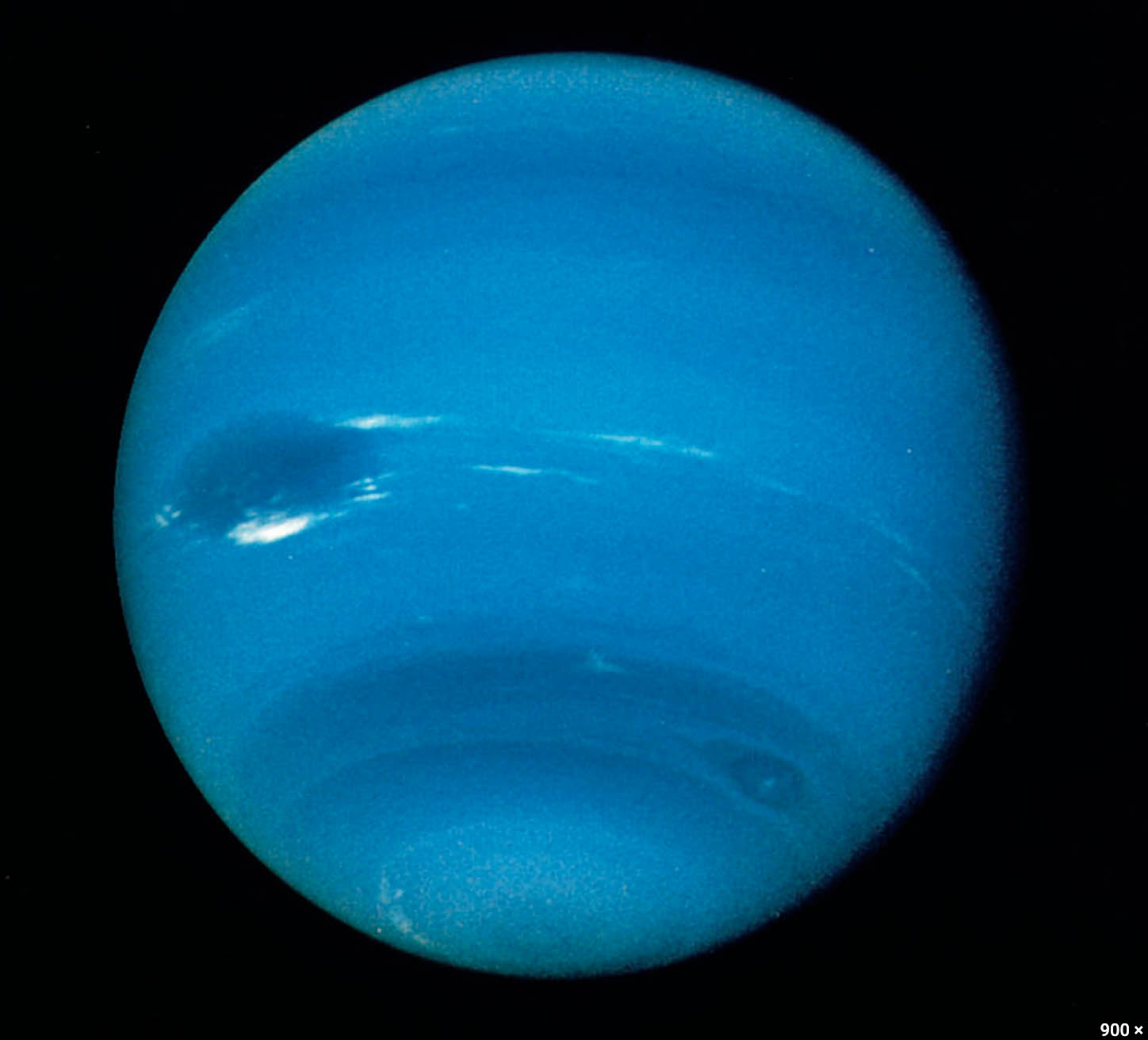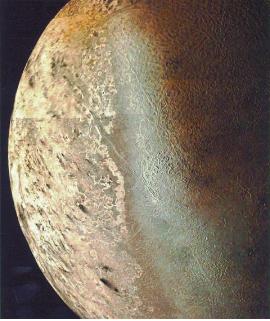Neptune
Facts about Neptune
• Neptune is the 8th planet from the Sun—the last planet in our solar system.
• It is a Gas Giant.
• It was discovered in 1841/1846.
Diameter: 30,777 miles
Mass: 17.2 Earth masses
Density: 1.64 where water = 1
Gravity: 1.14 times that of Earth
Albedo (% of Sunlight reflected): 41%
Rotation on Axis: 19.2 hours
Inclination of Axis to Orbit: 28.3°
Distance from Sun: 2,794,3500,000 miles
Revolution about Sun: 163.73 years
Inclination of Orbit to Earth’s Orbit: 1.77°
Atmosphere: 74% hydrogen gas, 25% helium gas, 1% Methane gas
Surface Temperature: –373° F just below cloudtops
Moons: Neptune has about a dozen moons. Triton, its largest has a diameter of 1,678 miles and orbits the planet every 5.9 days.
Observing in a small telescope: In a small telescope, Neptune appears as a small, pretty blue disk. You need magnifications of 200x or more just to see a hint of a disk. To find it, It is easiest to use a computerized GO TO telescope that can automatically move to any object chosen from a list in its hand-controller.

Neptune has spots like Jupiter’s Great Red Spot. However, its spots representing turbulence in the atmosphere, similar to hurricanes, form and dissipate.


